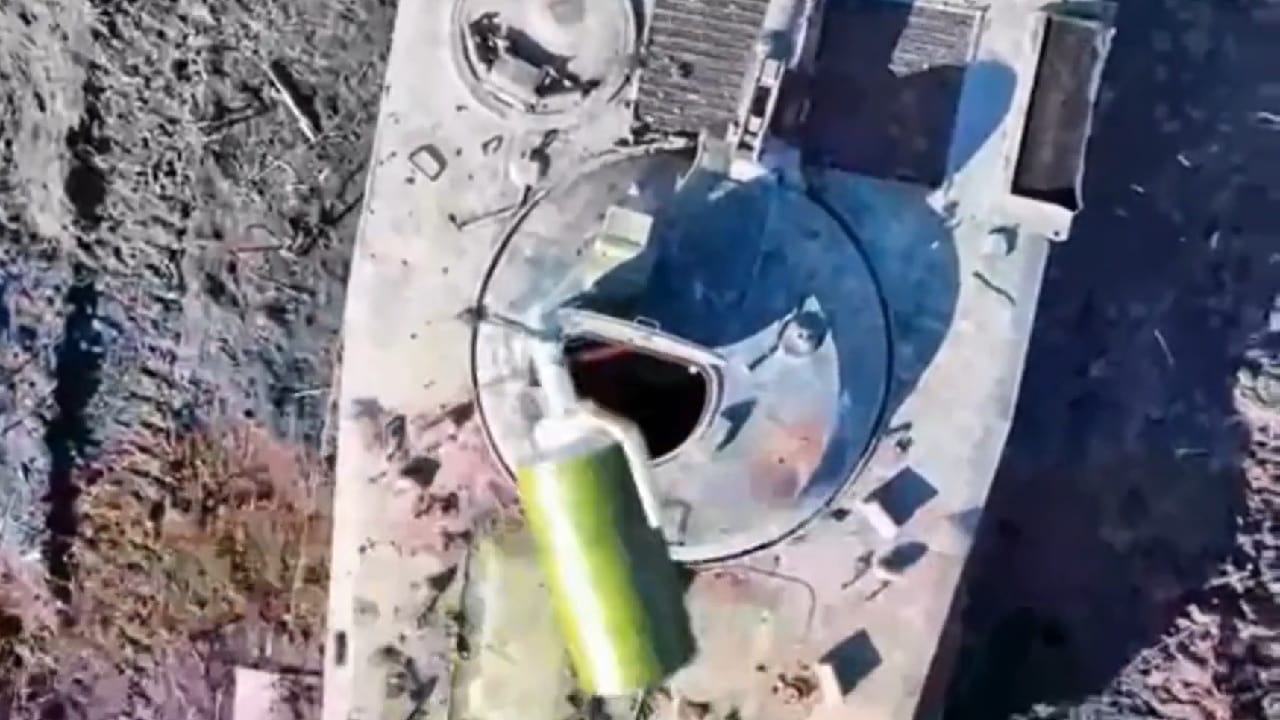Russia’s armored and tracked vehicles are not faring well as they defend against Kyiv’s ongoing counteroffensive.
Indeed, the country’s fleet of vehicles has been targeted with particular ferocity by Ukrainian forces over the course of Russia’s invasion.
From main battle tanks to infantry fighting vehicles to self-propelled artillery, these heavy machines have been obliterated by Ukraine’s arsenal of domestic and foreign-imported weapons.
New Footage Shows Ukraine Destroying Russian Armor in Ukraine
Earlier this week, open-source intelligence group Ukraine Weapons Tracker published a video on X (previously Twitter) showing the destruction of a Russian BMP-1 infantry fighting vehicle.
In the 44-second clip, Ukraine’s 110th Mechanized Brigade reportedly uses a 40mm HEDP grenade dropped from an unmanned aerial vehicle to take out the lone vehicle.
According to the @UAWeapons handle, the barrage occurred near Avdiivka, Donetsk Oblast, an area that has seen a lot of fighting amid the counteroffensive.
Introducing the BMP
Like so much Russian equipment, its amphibious, tracked infantry fighting vehicle was developed during the Soviet era. The BMP-1 was the first model, designated by NATO early on as BMP and BMP-76PB.
Around a decade after the BMP-1 variant arrived, Soviet engineers began to work on its successor. The BMP-2 IFV first appeared in the late 1970s, equipped with several improvements over its sister variant. The second BMP iteration became one of the Eastern Block’s most numerous combat vehicles. The Soviet Army alone was estimated to possess more than 20,000 of these vehicles.
While the variants have a number of capabilities in common, the BMP-2 has a few key enhancements that make it a superior fighting vehicle.
First and foremost, the BMP-2 is fitted with a versatile and fully stabilized, dual-fed 30 mm cannon, which is a step up from the non-stabilized 73 mm low velocity gun used by its predecessor.
As detailed by Military Today, “This cannon fires HE-FRAG, HEI-T and armor-piercing tracer (APDS-T) ammunition. It can engage armored targets at a range of 1 500-2 000 m, ground targets at a range of 4 000 m and helicopters at a range of up to 2 500 m. The APDS-T round penetrates 18 to 55 mm of steel armor, depending on the range. So even though it looses in terms of armor penetration to the 73 mm gun of the BMP-1, that could penetrate 335-400 mm of steel armor, the new 30 mm cannon proved to be a more versatile and successful weapon. Later it was used on a number of Soviet/Russian armored vehicles, as well as attack helicopters.”
How Does the Bradley Vehicle Stand Up to the BMP?
Russian forces have leaned heavily on this Soviet-era infantry fighting vehicle during the invasion. Ukrainian forces frequently deploy its American counterpart — the Bradley tracked armored vehicle. That solid and effective platform has been used by U.S. forces for decades, and it has proven to be a crucial asset for Ukrainian forces. Last month, two Ukrainian soldiers told ABC News that they were targeted while driving a Bradley vehicle on the frontlines. As one soldier pointed out in the interview, if they had been using a Soviet armored personnel carrier like the BMP, “we would all probably be dead after the first hit.”
#Ukraine: Near Avdiivka, #Donetsk Oblast, an abandoned Russian BMP-1 infantry fighting vehicle was destroyed by the 110th Mechanized Brigade using 40mm HEDP grenades adapted to be dropped from a drone. pic.twitter.com/cCtUF9emgT
— ???????? Ukraine Weapons Tracker (@UAWeapons) August 8, 2023
Maya Carlin, a Senior Editor for 19FortyFive, is an analyst with the Center for Security Policy and a former Anna Sobol Levy Fellow at IDC Herzliya in Israel. She has by-lines in many publications, including The National Interest, Jerusalem Post, and Times of Israel. You can follow her on Twitter: @MayaCarlin.

